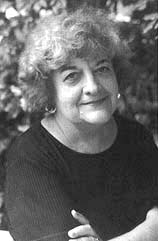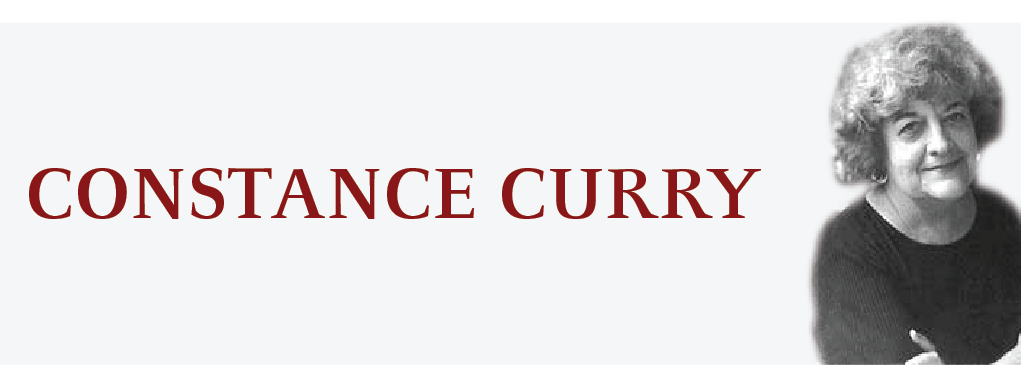 I became involved in the Civil Rights movement in 1960 and worked with the Student Nonviolent Coordinating Committee (SNCC) and the American Friends Service Committee on school desegregation, voter registration and economic development until 1975.
I became involved in the Civil Rights movement in 1960 and worked with the Student Nonviolent Coordinating Committee (SNCC) and the American Friends Service Committee on school desegregation, voter registration and economic development until 1975.
In the years since then, I have realized that many people, black and white, felt the 1964 Civil Rights Act and the 1965 Voting Right Act had pretty much solved our problems of racism and injustice. But this is clearly not the case.
In the late 1990s, I was struck by a news article on the issue of felony disenfranchisement pointing out the large number of black men in particular who could not vote after their release from prison. More than 5.3 million Americans are barred from voting because of past criminal convictions, says the Sentencing Project, a leading advocacy group for reform of the criminal justice system. (This is true even if they have completely served their sentences and are not on probation.)
Because more than 60 percent of the prison population is black or Hispanic, the voting power of these groups is disproportionately diluted. This made me angry when I thought of the many who had died and the sacrifices so many had made during the Civil Rights Movement.
So I began looking at the many issues of racism in the criminal justice system. In considering education and imprisonment of black people, we need to recall some important historical facts.
It was against the law during slave days, to teach a slave to read or write -- denial of education goes way back. Also, during reconstruction, and later, there were efforts by white lawmakers to have more punitive and longer sentences for crimes they thought black people were more likely to commit. Today, we face a whole spectrum beginning with racial profiling and ending with the large number of black men who have been executed or who await execution on death row.
Then, when looking at issues of public education, I realized the school system here in Atlanta and indeed all over the country was re-segregating and the process was closely connected with the large number of young black men going into the prison system.
Several groups began working to stop this “school to prison” pipeline and we continue today as the problem worsens. One of the worst elements of this tragedy is the connection to money -- of course -- and the vast sums being spent on building prisons and keeping them filled.
Under President George W. Bush, private prisons started flourishing, often in poor rural areas where people welcomed them, hoping it would improve the local economy. The number of beds for prisoners in each institution and the prison population determine the income the state pays to these private corporations. One can see the analogy of a system where people are traded on Wall Street instead of a slave block in Charleston.
With more than 2 million people in prison, the United States has the world’s highest incarceration rate. If you add those on probation and parole, the figure is 6.5 million, or one in every 32 adults. The majority of U.S. inmates are black males, but prison populations increasingly include Latinos, other minorities, and the poor in general.
We are surrounded by messages of “get tough on crime,” “three strikes and you’re out,” zero tolerance policies in schools, mandatory sentencing, disparities in drug sentencing for crack and for cocaine, and the media portrayal of “young black predators.”
Most of the southern states now spend more on incarceration than on education, and President Bush’s application of the under-funded “Leave No Child Behind” program takes a great toll on children who don’t test well, feeding them right into the school-to-prison pipeline.
Young black men face a lack of indigent defense, prison sentences instead of drug treatment, abominable prison conditions and a lack of re-entry programs. You know you have a problem when your nation has more black men in prison than in college.
Several years ago, I was visiting the Mississippi Legislature when I overheard a white man talking to his colleague. He had been reading about the rise in population in the United States of non-whites and how they would soon be in the majority. He suggested that if we can continue to put all the blacks and other minority males in prison, they won’t be able to vote and “won’t be able to have babies, and we can stay in the majority.”
That was telling of the attitude then of someone in power. But more telling of what has become of the struggle for equality came from a black friend of mine who was on the national NAACP board.
She was visiting the then privately-run Walnut Grove juvenile detention center outside Jackson, Miss. She and a few others were standing outside looking up at the facility through the barbed when she felt a small tug on her sleeve. It was a young black boy — maybe 11, and he said, pointing to the prison, “That’s where I wanna go — they got three hots and a cot, and it’s cool in the summer and warm in the winter and it has new books, and I was thinking since you are my color, you might could get me in.”
Is this the legacy of the Civil Rights movement?
These public education and criminal justice injustices, hidden and ignored, now infect present-day America. Remedying them must become the cutting edge of the human rights movement in this country today.
Watch JJIE's interview with Martin Castro, chairman of the United States Commission on Civil Rights: part one, part two.

One can see the analogy of a system where people are traded on Wall Street instead of a slave block in Charleston.
Wow, fantastic summary of the ‘new racism,’or the old racial nationalism and its evolution to the21st century, a commentary which helps to explain the idiocy of the Republican Party half wits collaborating in cacophony and
mindlessness in their party ‘debates.’
Mercy, that little boy does NOT want to get a cot or a hot at Walnut Grove. Ha, maybe a 5 minute tour of that violent hell hole would be all he would need to want stay out of that gladiator school. No, no, no, that child does NOT want a bed in there at any costs. I know a white boy who has spent the last 7 years of his life growing up in there since age 15. He has survived like an orphan in a Warsaw Ghetto. It is well…unimaginable and frightening beyond belief.
If it’s true what this little boy said, he needs to go in there for just one minute, alone, and he will want to run as fast and as far away from that torture chamber as he can get. Yes, he’s the right color for admission, that’s a fact, but he don’t wanna be’s there. Even if the point of what he said was that he’d be better off there because of his class and race.
And those MS legislators, not surprising. Getting justice in MS is like squeezing puss out of a wound, no one wants to touch it. It’s a beautiful place run by racists, stoops, zealots and sciopaths, judiciary included. And juries?? dumber than doorknobs.
And yes, when I go to visit the white boy I’ve been helping legally for the past 6 years, I am in a sea of black, 98% of the kids at the Grove are African American. I’m always amused at the portraits of the 8 smiling white guys who run GEO hanging in the lobby, a place that mines gold on the backs of black kids across the state of MS. No pics of Abe Lincoln, MLK, Bobby Kennedy, Rosa Parks, Jesus, no it’s the 8 smiling executives of the private prison company. Inspirational. It’s obvious what the score is.